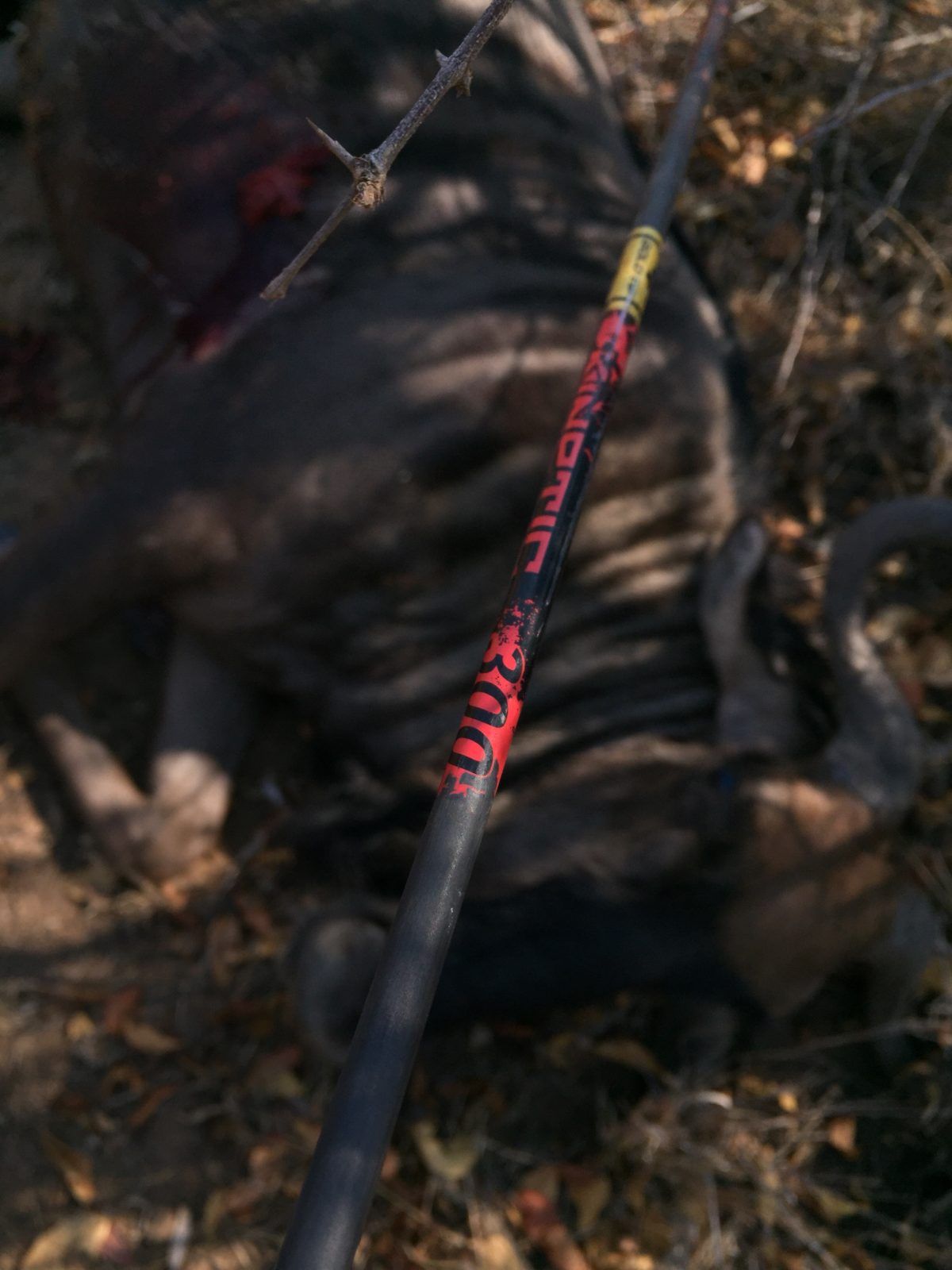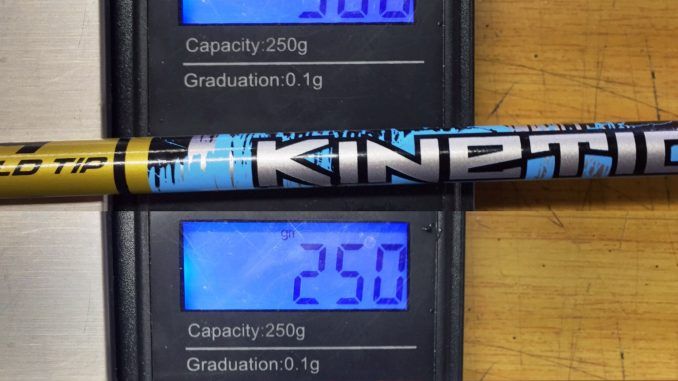
When you are new to the sport of bow hunting, just like most other decisions, you will almost always be at the mercy of what your buddies or the shop assistant tells you. The same with the arrows you need to purchase.
Arrows are not super expensive (well, not always) but they do end up being a sizeable investment on which you will base a lot of your settings and setup. Getting them right will save you a lot of time down the road.
 But first… a disclaimer: I have been shooting GoldTip arrows for a few years now, both on my hunting setup as well as my target setup. I really like how the arrows leave the bow. An arrow has a feel to it, and I simply like the way they feel coming off the string. I will refer to the GoldTip models as I know them, but the same style of arrows or similar configurations will be available in most of the other brands of arrows as well. So take the information from this article, and apply the logic behind it to whatever arrows your local shop stocks!
But first… a disclaimer: I have been shooting GoldTip arrows for a few years now, both on my hunting setup as well as my target setup. I really like how the arrows leave the bow. An arrow has a feel to it, and I simply like the way they feel coming off the string. I will refer to the GoldTip models as I know them, but the same style of arrows or similar configurations will be available in most of the other brands of arrows as well. So take the information from this article, and apply the logic behind it to whatever arrows your local shop stocks!
GoldTip has essentially three different shaft types to choose from: The Kinetic series, the Hunter series and the Velocity series.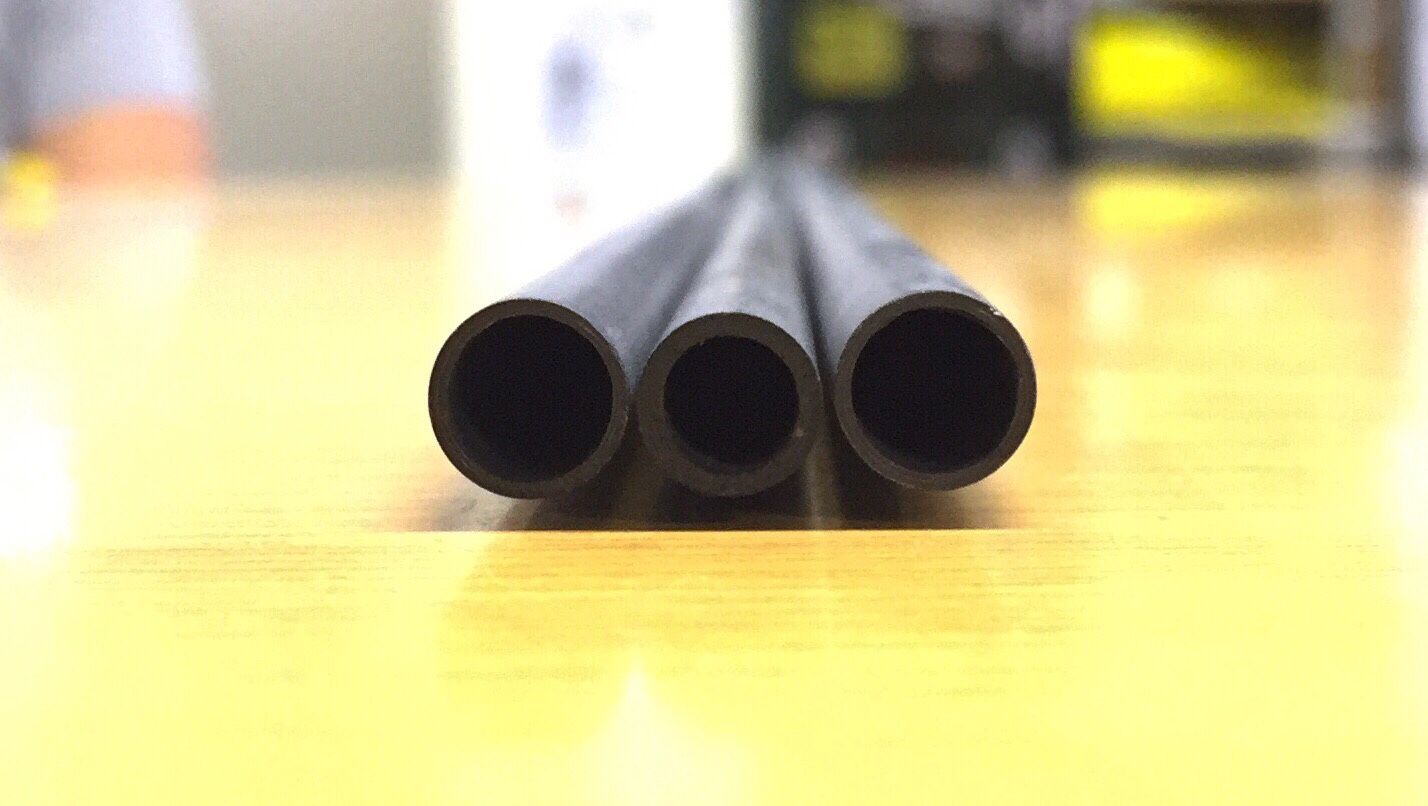
But now… how to choose which model or arrow style is perfect for me? Which one do I need?
Essentially it comes down to what you plan to hunt, and how aggressive or calm your bow is set up.
Lets start on the Kinetic Series Shafts:
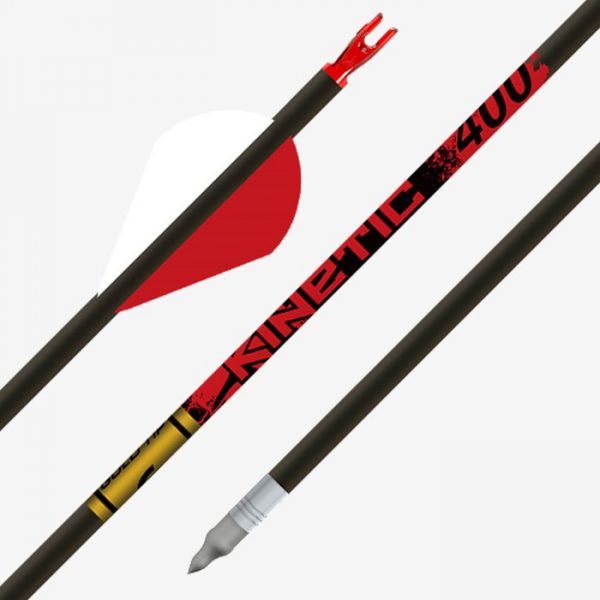 These are thinner diameter shafts, both inside and out, which means they have a thicker shaft wall than most. This thicker wall results in a heavier arrow shaft. It also means the spine response is such that if you have an aggressive cam, or a higher poundage bow, the Kinetic energy is transferred better through the arrow to the target.
These are thinner diameter shafts, both inside and out, which means they have a thicker shaft wall than most. This thicker wall results in a heavier arrow shaft. It also means the spine response is such that if you have an aggressive cam, or a higher poundage bow, the Kinetic energy is transferred better through the arrow to the target.
The secondary benefit is that you have a heavier overall arrow, which again, translates to better kinetic energy and generally better penetration. The downside is that you lose some speed, but you gain a bit of noise dampening on the heavier arrow.
How does it compare?
Kinetic 340 spine
Outer Diameter – 0.272”
Inner Diameter – 0.204”
Grains/inch – 9.9gpi
The arrow shaft plus inserts means that its not difficult to get to a 500gr arrow out of the box. So if you are looking for a heavy hitting arrow, or need to build a Big Game arrow to match legal criteria for giraffe or buffalo (for instance) then this is the shaft you need to go for. It likes to be heavy, and it likes aggressive cams or lots of draw weight.
Heavier arrows also penetrate better through weather, and seems to keep their energy better over distance.
Hunter Series Shafts:
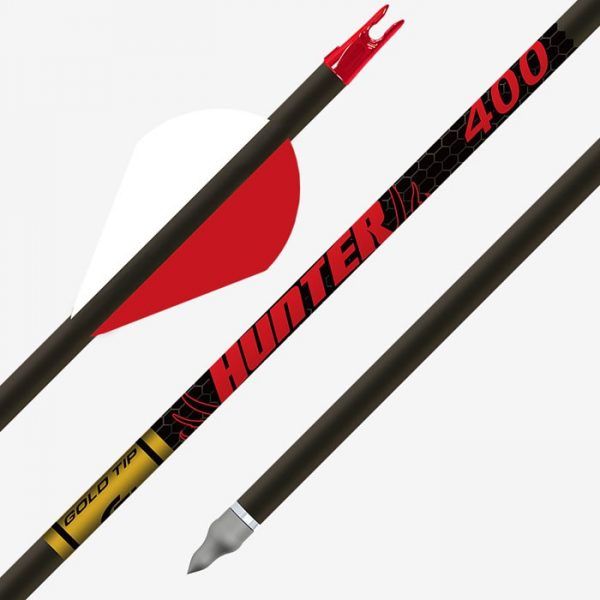 The Hunter shafts are the Be Everything, Do Everything shafts from GoldTip. These are standard inner and outer diameter shafts with a normal wall thickness on the shaft wall. Its a mid weight shaft that transfers energy very well, and with a bit less weight, you gain a little bit of speed as well.
The Hunter shafts are the Be Everything, Do Everything shafts from GoldTip. These are standard inner and outer diameter shafts with a normal wall thickness on the shaft wall. Its a mid weight shaft that transfers energy very well, and with a bit less weight, you gain a little bit of speed as well.
So if you are going to go out to hunt for the pot, and have no idea if you will be shooting small, like an impala or blessbuck, or something tough like a warthog, or even mid-bigger game like a wildebeest, then the Hunter series is your arrow. Happily performs with a 40lbs draw weight as well as a 70lbs draw weight bow.
How does it compare?
Hunter 340 spine
Outer Diameter – 0.300”
Inner Diameter – 0.246”
Grains/inch – 8.9gpi
Because its a lighter shafted arrow, with normal .246” inserts you can expect to lose about 30-50gr of weight from your arrow on longer draw lengths. More speed, but a bit more noise as well. This arrow will also result in an average FOC.
The Light Velocity series Shafts:
 This is almost a bit of a speciality shaft type. If you have a slow bow, or simply need more speed, then you will start out with the Velocity. By far the lightest in the series, the Velocity shafts are thinner on the outer diameter than a hunter, but the same inner diameter. So you end up with thinnest shaft wall of the range.
This is almost a bit of a speciality shaft type. If you have a slow bow, or simply need more speed, then you will start out with the Velocity. By far the lightest in the series, the Velocity shafts are thinner on the outer diameter than a hunter, but the same inner diameter. So you end up with thinnest shaft wall of the range.
Why would you even consider this shaft if you have a speedy bow and specifically want to hunt, not shoot target faces at unknown distances?
Well, for exactly that reason. It’s a great walk-and-stalk arrow. The extra speed means that should you mis-judge your distance to the animal, the drop rate is a lot lower & flight is straighter (less of an arc), so chances are still pretty good that you will be well within the desired kill zone for the animal, especially of you are shooting short to medium distances.
How does it compare?
Velocity 340 spine
Outer Diameter – 0.296”
Inner Diameter – 0.246”
Grains/inch – 8.2gpi
There is another benefit on this arrow that is often overlooked… If you are looking to build a heavier FOC arrow (15% plus) then this is an ideal shaft for it. It’s light so you can easily swop the fletches at the back for feathers, gaining a few grains on the leverage side, and with the GoldTip FACT Weight system, adding weigh to the front with a brass insert and/or screw in weights, is pretty simple to do. Choose a heavy broadhead and you are well on your way! the GoldTips are pretty strong shafts, so even with the thinner wall, they will still stand up to some serious punishment.
Obviously, there are more arrows to consider, and every brand has a similar selection of shaft models. All you need to do is figure out what will fit your style best.
 Thin Diameter Shafts? Is worth it?
Thin Diameter Shafts? Is worth it?
The thought between the thinner diameter shafts are two-fold. A shaft that has a smaller outer diameter will need a thicker wall to retain the spine, so you are looking at a technically stronger arrow shaft… BUT there is a but… a thicker carbon shaft loses some of its inherent flexibility so direct hits on the shaft (like during practice) can result in cracked or split shafts.
The second angle is that a thinner shaft will penetrate better, both through an animal (the shaft is thinner than the entry hole, less shaft to grip onto) as well as better penetration through weather (both for wind and precipitation)
The last point to keep in mind is that a thinner shaft doesn’t always take standard inserts, so in the GoldTips (like the Kaos and Pierce ranges) you will actually run an insert/outsert combination. the bonus is that this ads weight to the front of the arrow, increasing FOC. (On other arrow brands, you might need a thinner broadhead type, typically referred to as a “deep-six” type)
Shaft straightness or perfect 90-degree edge?
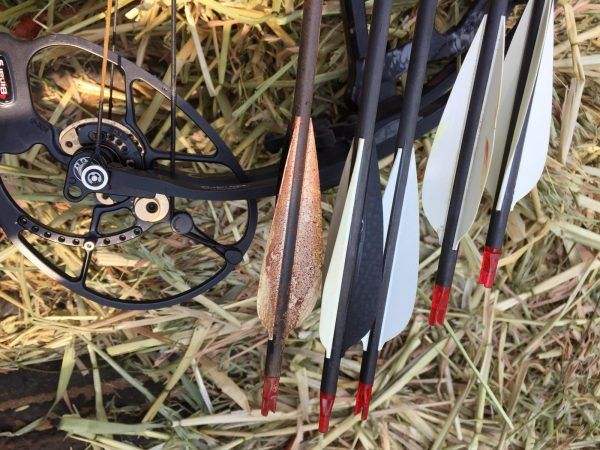 This is a point for contention. If you want the best possible arrow, go for the premium of everything. The difference between a cheaper and more expensive version of the same range of arrows (in GoldTip, the standard vs XT vs PRO model types – Hunter/Hunter XT/Hunter Pro – for example) is generally the tolerance of weights between different shafts (a standard shaft will have a +/-2gr tolerance between shafts where a PRO shaft will have a +/-0.5gr tolerance) It also has a shaft straightness tolerance difference (a standard shaft will have a +/-0.006” tolerance between shafts where a PRO shaft will have a +/-0.001” tolerance)
This is a point for contention. If you want the best possible arrow, go for the premium of everything. The difference between a cheaper and more expensive version of the same range of arrows (in GoldTip, the standard vs XT vs PRO model types – Hunter/Hunter XT/Hunter Pro – for example) is generally the tolerance of weights between different shafts (a standard shaft will have a +/-2gr tolerance between shafts where a PRO shaft will have a +/-0.5gr tolerance) It also has a shaft straightness tolerance difference (a standard shaft will have a +/-0.006” tolerance between shafts where a PRO shaft will have a +/-0.001” tolerance)
Personally, I have found that ensuring the shaft is cut exactly straight (true 90-degree angle cut), and the nocks and points are inserted and glued straight, the grouping size will remain fairly small.
That said… if you expect a longer distance hunt, you might be well to do spend the extra money and ensure consistency in your shafts. reducing possible variables is never a bad thing.
